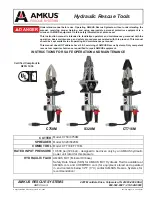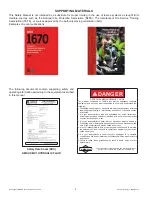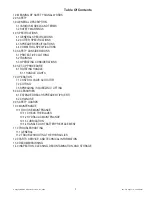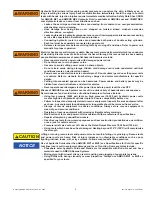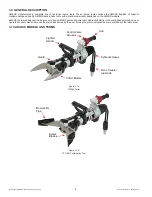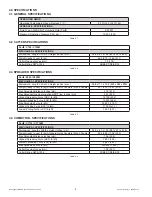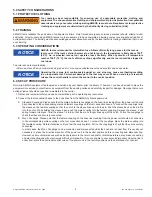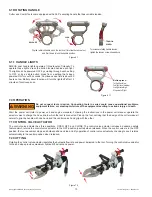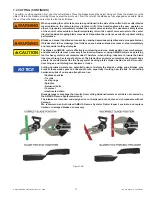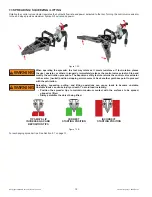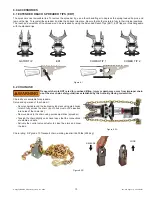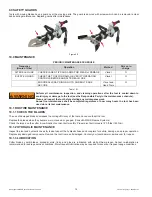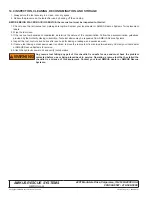
©Copyright AMKUS Rescue Systems, Inc. 2020
LAL-001 August 11, 2020 Rev01
9
5.0 SAFETY CONSIDERATIONS
5.1 PROTECTIVE CLOTHING
WARNING
Tool operators bear responsibility for ensuring use of appropriate protective clothing and
equipment. The chosen protective clothing and equipment must provide protection from potential
hazards users may encounter while operating AMKUS rescue tools. Requirements for protective
clothing and equipment are determined by the Authority Having Jurisdiction (AHJ).
5.2 TRAINING
AMKUS tools facilitate the extrication of entrapment victims. Only trained emergency services personnel should attempt victim
extrication. All personnel using AMKUS rescue tools are assumed to have completed a training course covering safe extrication of
entrapment victims. The training must be acknowledged as educationally sound by the local Authority Having Jurisdiction (AHJ) over
such training.
5.3 OPERATING CONSIDERATIONS
NOTICE
AMKUS tools are intended for intermittent use. Allow su
ffi
ciently long pauses for the rescue
tool to cool. If the tool’s exterior becomes too hot to touch, the temperature is likely above 120°F
(49°C). An overheated rescue tool operates less e
ff
ectively. When hydraulic oil temperature
reaches 158°F (70°C), the tool’s e
ffi
ciency drops signi
fi
cantly, and the tool should be stopped to
cool down.
To avoid rescue tool overheating:
• After use, clean o
ff
any accumulated oil, grease, dirt, or corrosive substances with a damp cloth and soapy water.
NOTICE
Operating the rescue tool continuously against an end stop may cause overheating resulting
in an inoperable tool. Permanent damage to the tool may occur. When an end stop is reached,
release the control handle to return the control to the neutral position.
6.0 SET-UP PROCEDURE
Normally, AMKUS equipment is prepared and serviced by your dealer prior to delivery. If, however, you have decided to place the
equipment into service yourself, remove equipment from the packing cartons and carefully inspect for damage. Damage that occurs
during shipment should be reported immediately to the carrier.
1. Gather and review all safety and use documentation prior to operating any rescue tool.
2. Connect the tool connection hoses to the hose lines from the AMKUS hydraulic power unit.
A. Standard Couplings: Please note that the male and female couplings on the hose lines leading from the power unit should
be connected to the corresponding male and female couplings on the tool connection hoses. To connect the couplings, twist
the sleeve on the female coupling so that the notch in the sleeve lines up with the pin. Push the sleeve back so the pin
fi
ts
into the notch. While holding the sleeve back, push the male coupling into the female coupling. Release the sleeve; it will
spring forward into place. Twist the sleeve 1/4 turn so that the pin no longer lines up with the notch. Pull on the couplings to
check that they are securely connected.
B. Mono Couplings: Please note that the female coupling on the hose lines leading from the power unit should be connected
to the corresponding male coupling on the tool connection hoses. To connect the couplings, place the male coupling into
the female coupling. Rotate clockwise until you feel the coupling latch. Pull on the couplings to check that they are securely
connected.
In most cases, the Mono Couplings can be connected and disconnected while the hose line is under
fl
ow. It is usually not
necessary to place the directional control of the power unit in the neutral position before connecting and disconnecting.
However, certain circumstances such as back pressure in the return line and/or cold temperatures, may make connecting
and disconnecting under
fl
ow extremely di
ffi
cult or impossible. If you are unable to connect and disconnect while the line is
under
fl
ow, place the directional control valve of the power unit in the neutral position and then disconnect or connect.

